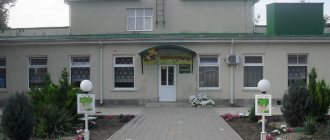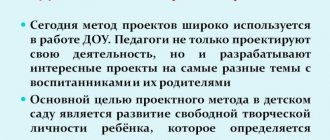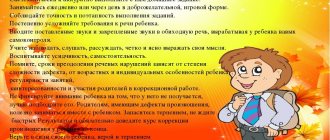Article:
A child’s sensory development is the development of his perception and the formation of ideas about the properties of objects and various phenomena of the surrounding world.
Sensory standards are generally accepted examples of the external properties of objects. The sensory standards of color are the seven colors of the spectrum and their shades of lightness and saturation, the standards of form are geometric figures, and the standards of size are the metric system of measures (in everyday life, size is often determined by eye by comparing one object with another, then there is this property is relative).
Sensory education is the development of a child’s perception and the formation of his idea of the external properties of objects: their shape, color, size, position in space, smell, taste, and so on. Knowledge begins with the perception of objects and phenomena of the surrounding world.
The importance of sensory education
The importance of sensory education is that it:
-Is the basis for intellectual development;
-Orders the child’s chaotic ideas obtained during interaction with the outside world;
-Develops observation skills;
-Prepares for real life;
-Positively affects the aesthetic sense;
-Is the basis for the development of imagination;
-Develops attention;
-Gives the child the opportunity to master new methods of subject-cognitive activity;
-Ensures the assimilation of sensory standards;
-Ensures the development of skills in educational activities;
-Influences the expansion of the child’s vocabulary;
-Influences the development of visual, motor, figurative and other types of memory.
The sensory development of a child is the key to his successful implementation of various types of activities and the formation of various abilities. Therefore, sensory education should be systematically and systematically included in all moments of the baby’s life.
1. Teach children to look at objects. Grasp them with both hands, trace them with a finger of one hand or the other.
2. Throughout the day, repeatedly tell children the various properties of the objects they are manipulating (color, shape, size, material).
3. Acquaintance with the subject should be carried out with interest, evoking positive emotions in children.
4. The process of examining objects must be accompanied by words. Children remember the designations of the qualities of objects together with their perception.
5. It is necessary to encourage children to demonstrate independence and the desire to share their impressions.
6. Ask your child questions more often.
7. Teach children to act in a certain sequence.
8. The process of perception must include movements of both hands (move your hand along the contour, outline it).
9. Consolidate the knowledge gained during the examination in performing activities (drawing, modeling, appliqué, design).
10. Enrich and saturate the child’s objective world, diversify the world of things that the baby can touch and examine.
11. Teach children to listen to different sounds - this enriches the auditory experience.
As a result of systematic work on sensory education of young children, they develop skills and abilities that indicate the appropriate level of development of perception:
1. Children successfully identify and take into account color, shape, size, texture and other characteristics of objects and phenomena when performing a number of practical actions.
2. Group according to
sample objects by color, shape, size and other properties when choosing from four varieties.
3. Correlate dissimilar objects by color, shape, size, texture when choosing from four varieties (or four varieties of color, shape, etc.).
4. Designate various objects in accordance with their characteristic sensory features: forest, sea, sun, leaves, lights, etc.
5. Actively use “objectified” words-names to designate shape (brick, ball, ball), color (grass, orange, tomato, etc.).
6. Select objects of the required shape or color for the development of an independent plot game (load bars - “bricks” or cubes of a certain color onto the car, select details of outfits for dolls in accordance with the color of their clothes).
Parent library
1. E.G. Pilyugin “Sensory abilities of a baby”;
2. E.A. Yanushko “Sensory development of young children (1-3 years)”;
3. L.A. Wenger “Education of a child’s sensory culture”;
4. T. I. Likhanova, S. A. Prisyazhnyuk, I. V. Petrova “Sensory development of children of early and preschool age. Toolkit";
5. Ayres Ann Jean “The Child and Sensory Integration.” Understanding Hidden Development Problems.”
Consultation for educators.
In order to raise a child as a full-fledged personality, it is also necessary to carry out sensory education. Sensory education is a purposeful process of developing sensations, perceptions, and feelings. The basis of sensory education are analyzers, sense organs: eyes, ears, nose, tongue, body (skin), tactile analyzers (hands), which have the natural ability to determine: eyes
(color, shape, size, spatial relationships);
ear
(sounds);
nose
(smells);
tongue
(taste);
body
(external qualities of the object and temperature, time relationships).
There are tasks of sensory education. The main ones are:
1. Teach the child to observe, consider, listen, and carefully study the world around him. This can only be taught through interest, mystery, mystery, which can be evoked through:
- Reading educational literature. For example: “Golden Meadow” by Prishvin, “Titmouse’s Calendar” by Bianchi, “Fox’s Bread” by Prishvin, children’s encyclopedias “I Explore the World,” etc.
- Through my own experience, the example of the teacher and parents. For example: “Why do nettles sting?” (It has small needles on its leaves that look like ampoules of acid. When a person touches a nettle, the ampule breaks and this acid burns us. Nettle is very useful for radiculitis and chandrosa.)
2. Teach the child to examine. The examination is carried out in three stages:
- We teach the child to determine the shape of an object as a whole. For example: a snowman has several circles of different sizes; round apple.
- We teach the child to identify the shape and size of the main parts of an object. For example: a chicken has a head, a body, and a tail.
- We teach the child to identify secondary parts of an object. For example: a chicken has a beak, eyes, wings, legs.
3. Form sensory standards in children. These are examples of one or another quality of an object, developed by humanity.
The standards are distinguished:
- Colors (red, green, blue, yellow).
- Shapes (triangle, square, rectangle, oval, etc.)
- Sizes (large, small, smallest, etc.)
- Taste (sweet, sour, bitter, salty).
- Smell (smell of burning, aroma of perfume, etc.)
- Standard of sound frequency sensitivity (loud, quiet sound; high, low voice, tone.)
- Time (second, minute, hour, day, week, month, year, day-night, winter-summer.)
- Standards of spatial representations (up, down, right, left, etc.)
- Standards of touch (smooth, prickly, fluffy, etc.)
4. To develop in children the ability to use their sensory skills in different types of activities. For example:
- Mathematics. Having mastered the standards of size large and small, the child can count or divide large carrots and small berries into two groups.
- Visual activity. Having mastered a particular color in a didactic game, the child uses it in appliqué, drawing vegetables, fruits, etc.
- A game. s/r "Birthday". The child, knowing which foods are sweet, sour, bitter, and salty, will be able to prepare the treat correctly.
To solve the problems of sensory education, various methods are used.
1. Examination of objects. For example: the apple is red, round, large, sweet, fragrant.
2. Method of sensory development of survey motivation. For example: “Why do you need to check the soil of plants with your finger before watering?” If the soil is dry, it needs to be watered; If the ground is hard, it needs to be loosened so that the ground can breathe and water can flow better.
3. Method of verbal designation of all qualities of an object. The teacher, together with the children, pronounces all the properties of the object or item during the examination. For example, an apple: shape - round, color - yellow, taste - sweet, smell - fragrant, feel - smooth.
4. Comparison method. For example: we compare a square and a circle using the superposition method. Circle - round, roll, no corners. A square has angles, all sides are equal, the angles are the same.
5. Method of exercise, i.e. multiple repetition. For example, find all the objects that are round in shape and red in color and place them on a red mat.
For sensory education of children, it is necessary to create the necessary conditions:
1. A variety of meaningful children's activities.
2. Rich subject-development environment (equipped corners).
3. Systematic guidance of children’s sensory development, as a result of which children must know all the standards of the system and be able to examine.
4. Availability of Montessori material in the group.
5. Nature plays a special role in the sensory education of children. For example, in the forest, in the park, children learn to distinguish the color of autumn foliage: birch is lemon-colored, oak is brown, aspen is red or purple. A picture of an autumn forest, spanking is perceived brighter if the teacher offers to listen to the voices of birds, the sound of the wind, the rustle of falling leaves; teaches you to identify the smell of mushrooms and rotten greens.
Thus, the more sense organs are involved in cognition, the more signs and properties the child identifies in an object, phenomenon, and therefore, the richer his ideas, knowledge, skills and abilities become. This contributes to the full development of the child.


